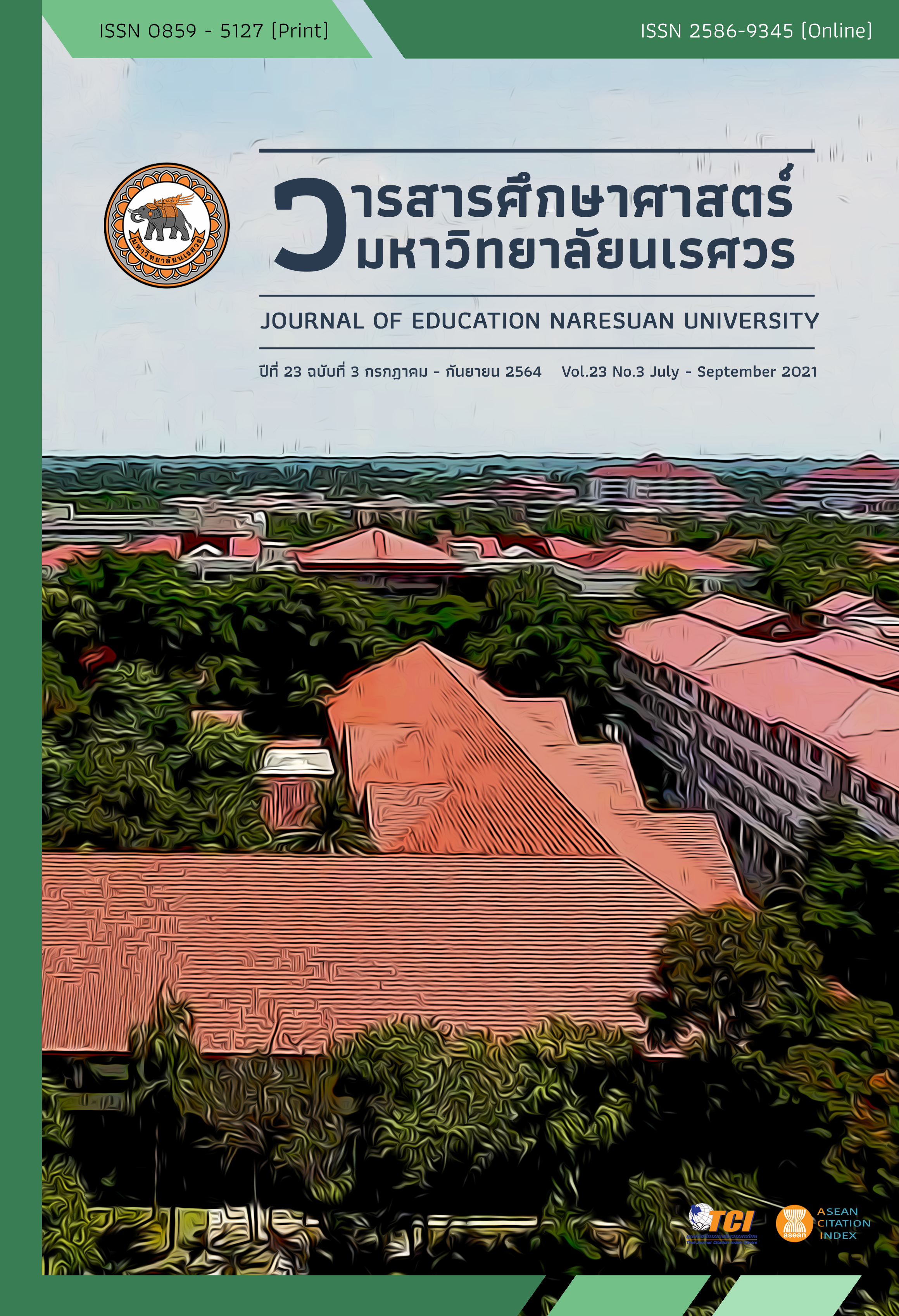ART LEARNING PROCESS TO PROMOTE EXECUTIVE FUNCTION กระบวนการเรียนรู้ศิลปะเพื่อส่งเสริมการคิดเชิงบริหาร
Main Article Content
Abstract
Prefrontal cortex has ability in management dimension which involves in the planning of complex behaviors, personality expression and decision. It is coordinated with other brain parts and is also called executive function. It will be highly developed during the age of 4 - 5 years. Therefore, this is an important opportunity for development through design thinking process that relates with prefrontal cortex function by learning management in art activities that are tools for happiness learning management. The art learning processes are including in four stages: 1) share, 2) plan, 3) act, and 4) show.
Article Details
The owner of the article does not copy or violate any of its copyright. If any copyright infringement occurs or prosecution, in any case, the Editorial Board is not involved in all the rights to the owner of the article to be performed.
References
Alexiou, K., Zamenopoulos, T., & Gilbert, S. (2011) Imaging the Designing Brain: A Neurocognitive Exploration of Design Thinking. In: Gero J.S. (eds) Design Computing and Cognition ’10. Springer, Dordrecht. https://doi.org/10.1007/978-94-007-0510-4_26
Bureau of Academic Affairs and Educational Standards. (2017). Early childhood education curriculum 2017. Bangkok: Community of Agricultural Cooperatives of Thailand. [in Thai]
Canestraro, N. (2017). The impact of Design Thinking on education: The case of Active Learning Lab (Master thesis). Venezia, Italy: Universita Ca' Foscari.
Center on the Developing Child at Harvard University. (2012). Executive function (InBrief). Retrieved from www.developingchild.harvard.edu.
Chemi, T., & Du, X. (2017). Art-based method in education around the world. River Publishers. https://doi.org/10.13052/rp-9788793609372
Chonchaiya, W. (2018). EF development in early childhood is the cornerstone of Thailand 4.0. Pediatrician Communication, 39(1), 11 – 13. [in Thai]
Chutabhakdikul, N. (2017). Assessment of executive function development in early childhood. The 29th Conference of Pediatric Nursing, organized by the Association of Pediatric Nurses of Thailand, 5 - 7 June 2017. Bangkok: Hotel Golden Tulip Sovereign Hotel. [in Thai]
Chutabhakdikul, N., Thanasetkorn, P., Lertawasdatrakul, O., Ruksee, N. (2017). Tool development and evaluation criteria for assessment of executive function in early childhood. ACADEMIC STAFF-Research Center for Neuroscience, Mahidol University. [in Thai]
Dam, R., & Siang, T. (2019). What is design thinking and why is it so popular? Retrieved from https://www.interaction-design.org/literature/article/what-is-design-thinking-and-why-is-it-so-popular
Diamond, A. (2012). Activities and programs that improve children’s executive functions. Curr Dir Psychol Sci, 21(5), 335 – 341.
Harnmethee, S. (2015). EF immunity for life and drug prevention handbook for kindergarten teachers. Bangkok: Rakluk Books. [in Thai]
IDEO. (2020). Design thinking defined. Retrieved from https://designthinking.ideo.com/
Lohsomboon, N., Pichayapaiboon, P., & Sangvanich, K. (2020). Design thinking process to create innovation art expression. Journal of Education Naresuan University, 22(1), 343-354. [in Thai]
Manchanda, N. (2016). How design thinking can transform your child’s creativity. Retrieved from http://medium.com/@NitashsM/how-design-thinking-can-transform-your-child-s-creativity-46700b3ee70c
Office of the Education Council. (2019). National standards for early childhood development. Bangkok: Prikwran Graphic. [in Thai]
Plattner, H. (2010). An introduction to design thinking process guide. Retrieved from https://www.alnap.org/help-library/an-introduction-to-design-thinking-process-guide
Sanawawi, A. (2007). Brain learning theory for parents, teachers and administrators. Bangkok: Brain-Best Book. [in Thai]
Tangcharoen, W. (1983). Art education. Bangkok: Visual Arts. [in Thai]
Thai Health Promotion Foundation and RLG Institute. (2018). EF executive function brain development manual for teachers. Bangkok: Matichon.
Vanada, D. (2014). Practically creative: The role of design thinking as an improved paradigm for 21st century art education. Techne Series, 21(2), 21 – 33.
Willis, J. (2012). Executive function, arts integration and joyful learning. Retrieved from https://www.edutopia.org/blog/arts-inegration-joyful-learning-judy-willis-md


